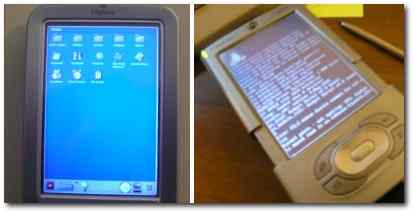
There are bugs that bug the user and bugs that lead to catastrophe. Below lie two examples of critically-buggy applications, which I recently decided are worth listing.
1. Windows 95 – Blue Screen of Death
I still remember, as a most classical example, the days of Windows 95. The operating system failed to cope with unhandled, misunderstood packets that ultimately gave the blue screen and required a reboot in most cases. Sooner or later people got hold of so-called ‘nuking’ software — one among virtually dozens of GUI-based free downloads. That little tool gave its owner the ability to unleash upon others the infamous ‘blue screen of death’.
IP address of the target computer was all one needed. It was easy to determine one’s IP address even when dynamically allocated by a dial-up ISP. Instant messengers (ICQ was new and hot at the time) simplified the process tremendously and tools that interacted with the IM existed as well. This gave your friends and foes the ability to ‘take you down’ whenever they desired.
Sooner or later, anti-nuke software was becoming mandatory. Yet another application to run in the background if you want to survive without rebooting and losing some invaluable work. Not good.
During the holiday, yet another critical flaw with Windows XP and Windows Server 2003 was found. Lessons have not been learned even 10 years later. The promise and efforts to make Windows more modular seem unfruitful.
2. Timely Example: WordPress 2.0 Bugs
I previously said that the release of WordPress would be premature. I said so as soon as rumours emerged. Matt Mullenweg spoke about an undetermined release that precedes Christmas. Boxing Day was the point when things took a gentle dive.
I now write about 40 messages a day in the WordPress support forums, making a voluntary contribution throughout the holidays, as promised. The pace of bug reports is worrisome. That aside, the WordPress Web site was not prepared for the demand either. There was a site migration issue on the very same date as the release and coding bugs emerged all too soon in the forums where they continue to resurface.
WordPress 2.0 was intended to be named after a Jazz musician, as always. ‘Stan Getz‘ was among the top contenders. I believe that WordPress should not be called Getz because it might give a favoured artist of mine a bad name. WordPress 2.0 is more like Milli Vanilli (sarcasm and an overstatement).
Earlier today a version database downgrader for WordPress was released. A few people regret the upgrade, but many are very happy with the new features. Whether the frustration supercedes the benefits is an important question. The answer is yet difficult to deliver and the situation hard to judge.

 ERE I am to report about yet another critical Windows bug, which many others have blogged about already. This DLL-based exploit has floated about for quite a while. It has now grown tremendously in terms of its scale though.
ERE I am to report about yet another critical Windows bug, which many others have blogged about already. This DLL-based exploit has floated about for quite a while. It has now grown tremendously in terms of its scale though.





 Filed under:
Filed under: 


 IRTUAL desktops are means of extending one’s workspace. Given the finite size of a monitor, one wonders if that size also imposes strict limits on the (in)visible window environment. Well, it does not. It is possible to treat the monitor as just a rectagular box or a a ‘sliding window’, which metaphrically glances at something much larger. It enables the user to view smaller segments of the whole at any one time. Most commonly, the user would watch only a quarter of the workspace at any one time.
IRTUAL desktops are means of extending one’s workspace. Given the finite size of a monitor, one wonders if that size also imposes strict limits on the (in)visible window environment. Well, it does not. It is possible to treat the monitor as just a rectagular box or a a ‘sliding window’, which metaphrically glances at something much larger. It enables the user to view smaller segments of the whole at any one time. Most commonly, the user would watch only a quarter of the workspace at any one time. ARLIER this week I mentioned Blake Ross; The context:
ARLIER this week I mentioned Blake Ross; The context: 
 ALM have intended, for quite some time in fact, to
ALM have intended, for quite some time in fact, to 